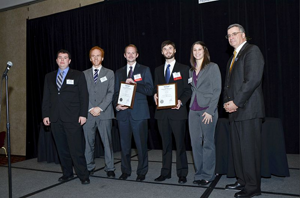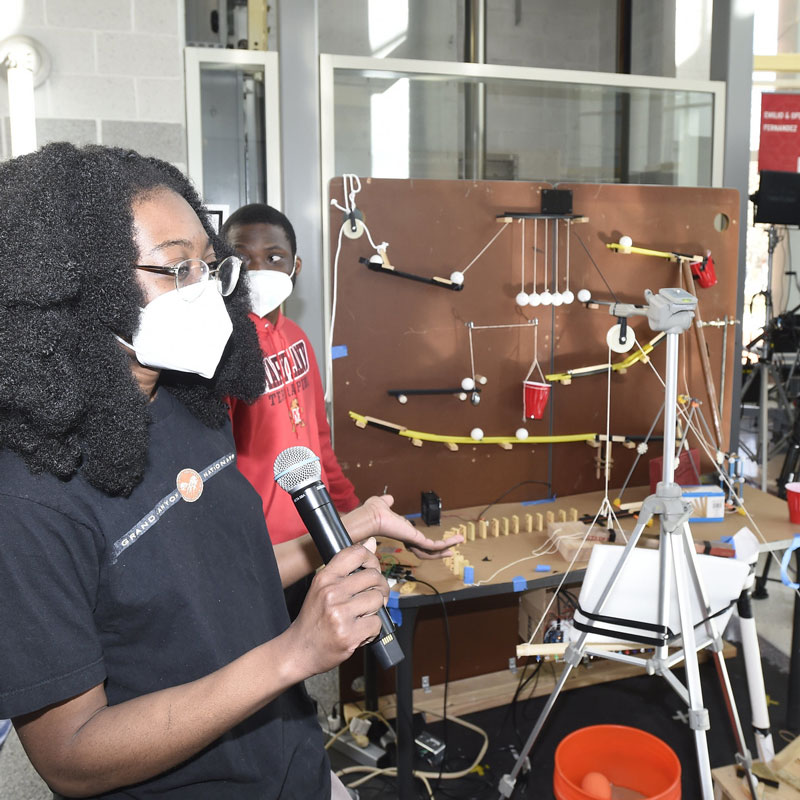News Story
Clark School Team Unofficially Satisfies Two Sikorsky Prize Requirements
Students on the Gamera human-powered helicopter team at the University of Maryland's A. James Clark School of Engineering have unofficially satisfied two of the three American Helicopter Society Sikorsky Prize competition requirements with a flight that unofficially lasted 65 seconds, stayed within a 10 square meter area and hovered at two feet of altitude. This flight also establishes new unofficial U.S. and world flight duration records.
Pilot Colin Gore, a materials science and engineering graduate student at the Clark School, was in the cockpit for the flight.
"The key to our students' success is the professionalism they have brought to every aspect of this enormously difficult challenge," said Clark School Dean Darryll J. Pines. "Our students are not only highly creative engineers but are also able to build on past successes in a systematic way, learning and improving as they go. They would compare favorably to professional engineers anywhere."
The flight was accomplished in a revamped Gamera II vehicle. Since the flights earlier this summer, each blade has been extended and the vehicle now measures 114 feet across from blade tip to blade tip. The structure arms have been enlarged to accommodate the larger rotors.
Also, a new, more ergonomic cockpit has been built. Sonar altimeters have been added to the rotors and the cockpit to measure the height of the vehicle when it's in the air. The transmission has also been rebuilt, allowing smoother power delivery.
To win the Sikorsky Prize, the team must also achieve a height of 3 meters during a flight of at least 60 seconds that stays within the prescribed 10 square meter area. The Gamera team will work through the week to meet the competition requirements.
More Information:
Published August 28, 2012





